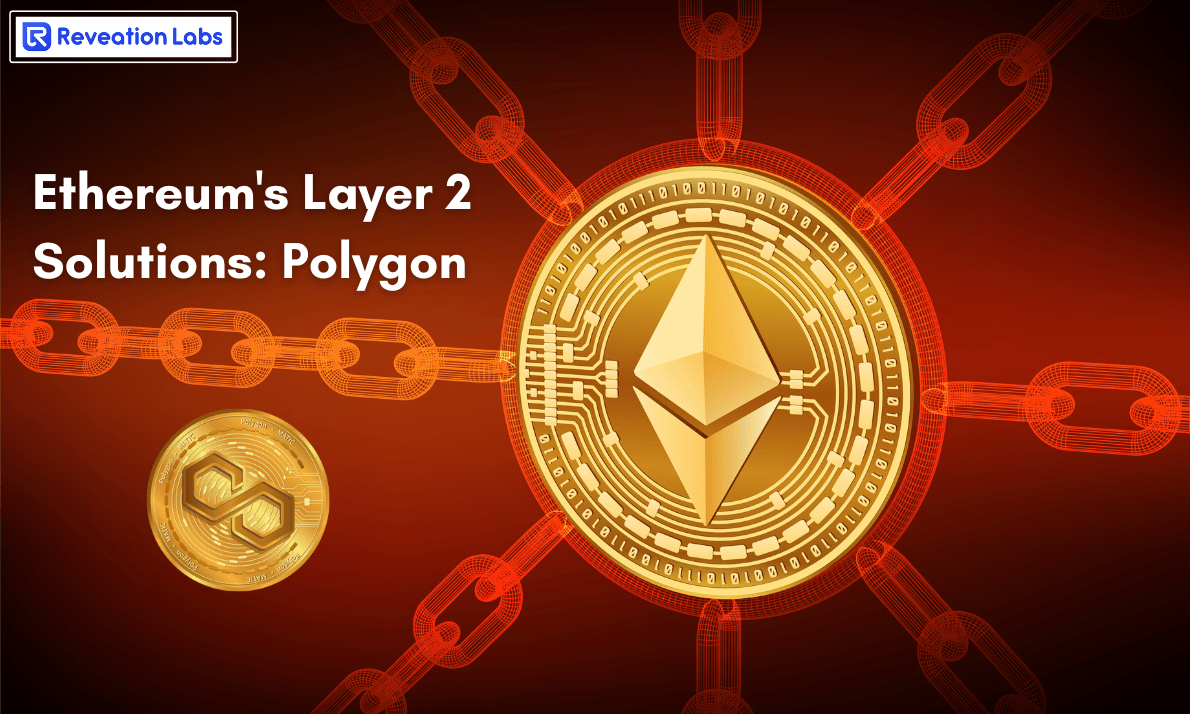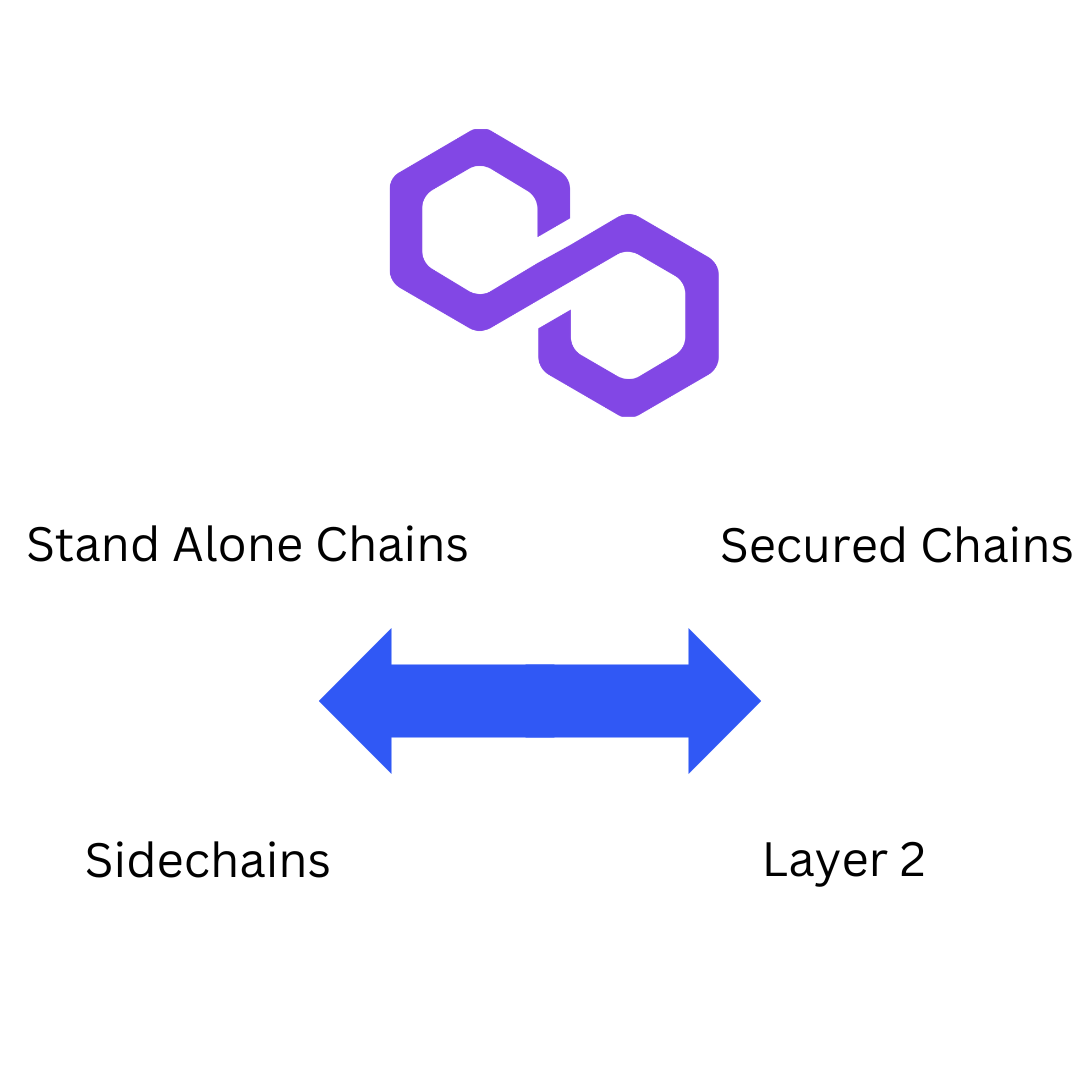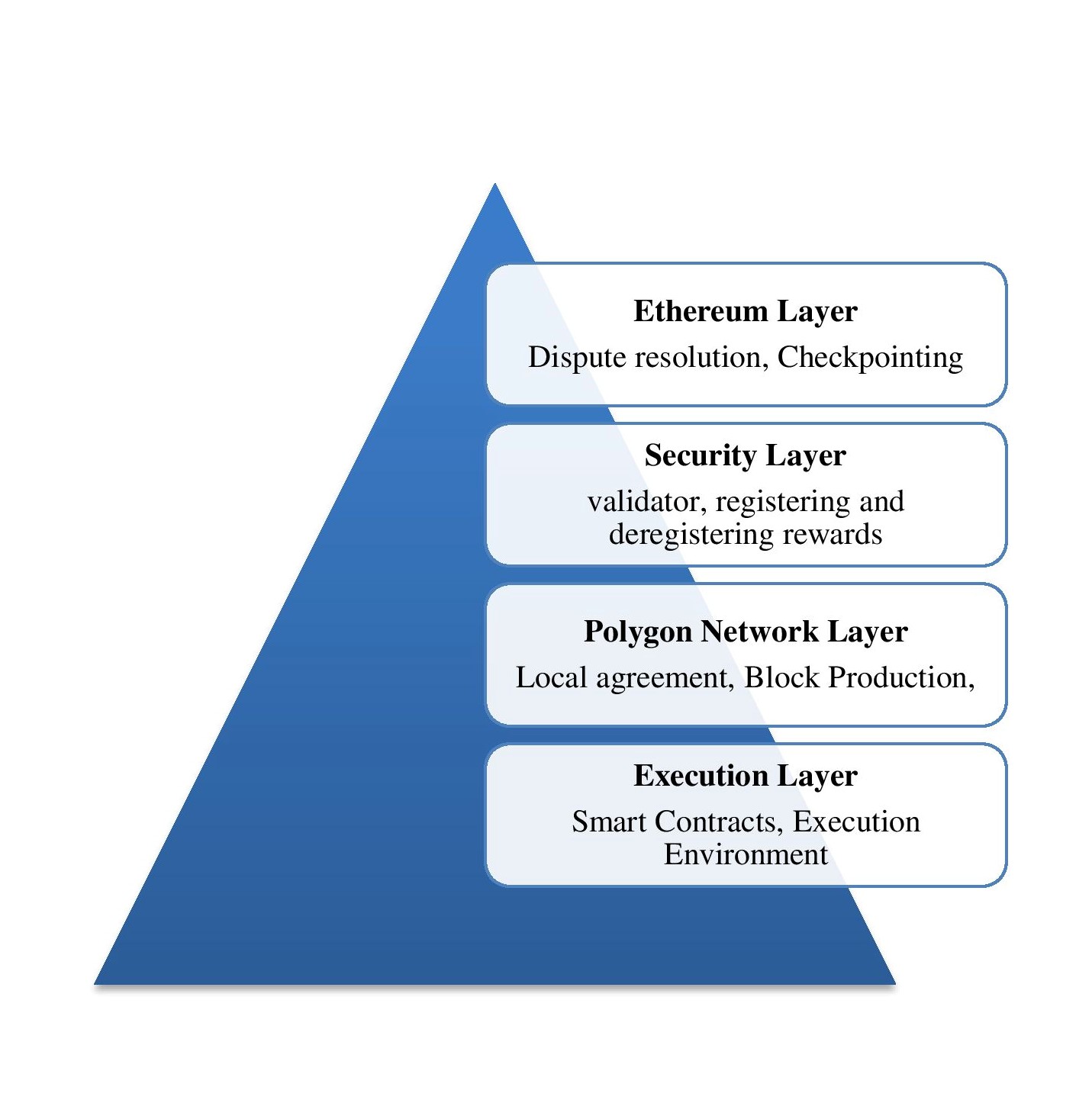Shayan Shaikh
Wed Nov 30 2022


Introduction
Polygon's goal is to create a more generalized scaling solution; when it comes to scaling, there are two main methods: layer 2 scaling and side chains. Layer 2 scaling is dependent on the primary layer's security. The most popular options are the Ethereum blockchain, plasma, optimistic roll-ups, and zK roll-ups.
Side chains usually rely on their security models by having a separate consensus mechanism. Matic pos chain or x-die are good examples. Polygon crypto aims to create an ecosystem that makes connecting multiple scaling solutions easy. Everything from side chains with different consensus mechanisms to layer two options such as plasma optimistic, roll-ups, and zk roll-ups.
Consider the existing matic scaling solutions, pos, and plasma chains, as one of many scaling alternatives accessible in the whole polygon ecosystem. Polygon also offers a framework that allows new companies to easily construct their own highly configurable scaling solutions if that is the road they choose.
Types of Polygon
Now, let's look at types of polygon blockchain technology to understand the project better. Polygon supports two significant types of Ethereum-compatible blockchain networks.
Standalone networks and secured chains networks that leverage security as a service model. Standalone chains rely on their security. For example, they can have consensus models, such as proof of stake or delegated proof of stake. These networks are fully sovereign, giving them the highest level of independence and flexibility. Still, they need help to establish a reliable security model.
For example, a pos requires a high number of reliable validators. This model is usually suitable for enterprise blockchains and already-established projects with solid communities. Secured chains make use of security as a service paradigm. This may be supplied directly by Ethereum.

For example, plasma's fraud proofs or a pool of professional validators. These validators operate in the polygon ecosystem and may be used by various projects, similar to the Polkadot shared security approach. Secured chains provide the highest level of security but at the expense of independence and flexibility.
Startups and security-focused projects typically prefer this model. The distinction between standalone and secured chains is more generic than the previously described split between side chains and layer 2 blockchain solutions. This allows the polygon to accommodate all possible scaling solutions.
Polygon Architecture
There are four abstract and interchangeable levels in polygon architecture.
Ethereum Layer
The Ethereum layer polygon chains can utilize Ethereum as their foundation layer and benefit from the strong security of Ethereum. This layer is implemented as a set of Ethereum smart contracts. It can be used for staking, dispute resolution, finality and checkpointing, and messaging between Ethereum and polygon chains.
Security Layer
This layer is optional, as polygon-based chains are not required. The security layer is next, another optional layer that can provide a validator as a service function. This function allows polygon chains to employ a collection of validators to check any polygon chain's correctness regularly.
This layer is often designed as a meta blockchain that runs concurrently with Ethereum and is in charge of verifying validator management, registering, deregistering rewards shuffle, and polygon chain validation. The security layer is abstract and can have multiple implementations with varying properties. This layer can also be implemented directly on Ethereum miners using the validators.
Polygon Network Layer
The polygon networks layer comes next. This is the first required layer in the polygon design; it comprises sovereign blockchain networks, each of which may perform the following activities.
- Compilation of transactions
- Local agreement
- Block production
Execution Layer
The execution layer is last but not least. This layer is responsible for understanding and carrying out transactions in polygon chains. It comprises two sub-layers: the execution environment and the execution logic.

Need for Polygon Architecture
The primary lesson from polygon architecture is that it is designed to be general and abstract. This enables other apps wishing to grow to select the best scaling solution that meets their specific requirements. As we all know, different apps may want to optimize for various reasons, such as
- Security
- Transaction speed
- Transaction cost,
-
Sovereignty
excelling in one typically necessitates making a compromise in another. For example, a defy protocol that aspires to store billions of dollars in smart contracts is likely to prioritize security and may be willing to sacrifice sovereignty. A protocol like this would very certainly make use of the Ethereum layer.
Another project, such as an NFT marketplace, may wish to optimize for ultra-low transaction costs and is ready to make a trade-off by decreasing its security from extremely high to adequate. In this situation, the project might forego the Ethereum layer in favor of a security layer based on a group of standard validators. On the other hand, a blockchain-based game may wish to rely on its consensus mechanism with ultra-fast block time; in this case, they can bypass both the Ethereum and the security layers and focus on the polygon network layer.
As we can see, the polygon can provide multiple options, and the teams behind various applications can choose the one that works best for them. It also aims to make switching from one scaling solution to another as simple as possible. This might be needed if the project's circumstances change or another better scaling solution becomes available.
Matic Pos Chain
This design also enables numerous polygon-based scaling systems to interact with one another. This is critical because it inhibits the formation of siloed systems. The Matic pos chain and themed plasma chain solutions are the only scalability options in the polygon ecosystem. Other solutions, such as zk roll-ups, optimistic roll-ups, enterprise chains, and other side chains, are also being actively worked on by the team. Currently, projects on polygon begin with theme pos and Matic plasma chains.
Matic Plasma Chain
Matic plasma chains is an Ethereum layer 2 predicate-based plasma implementation platform for developing scalable decentralized applications. Plasma allows transactions from the main chain to be offloaded into subsidiary chains, allowing for rapid and inexpensive transactions.
Matic pos Chain vs Matic Plasma Chain
The Matic pos chain is a permissionless sidechain that runs parallel to the Ethereum chain. The chain is secured by the proof of stake consensus mechanism with its validators, although the Matic pos chain has its consensus mechanism. It also relies on Ethereum security regarding validator staking and checkpoints. Matic pos chain is EVM compatible, allowing Ethereum-based projects to migrate their smart contracts effortlessly.
So matic pos chain and Matic plasma chains could onboard over 80 applications, process over 5 million transactions, and secure over 200 million dollars of user funds. Some projects that have already migrated to the Quick swap, a fork of uni swap, sushi swap, avegotchi, poly market, polka markets, and super farm are among the Matic pos chains that have debuted directly on Matic or are in the process of transferring.
In addition, infrastructure initiatives like the graph and chain link opted to expand to the polygon.
Fun Fact:- Polygon has announced a relationship with Atari, a significant participant in the video game business.
So far, Matic's rebranding to polygon and broadening the project's scope was a wise decision. This is primarily because it is becoming increasingly clear that various scaling solutions will be available in the future.
In the new architecture, the polygon can facilitate connections between these different scaling options. There is also a big focus on both optimistic roll-ups and Zk roll-ups which polygon can also add to the multitude of available scaling solutions.
The main risk here will be if one of these popular scaling technologies gets adopted without integrating with a polygon, even if this happens. This technology may eventually be integrated into polygons anyway. It will be fascinating to see how the polygon evolves when additional scaling options are added, and new projects are added. We'll also have to assess how easy it is to communicate amongst different scaling solutions that offer varying levels of security.
It's also worth noting that polygon's paper includes direct comparisons to other layer 1 blockchains, such as Polkadot, Cosmos, and Avalanche, which all focus on blockchain interoperability.
Polygon, on the other side, focuses on the Ethereum ecosystem, with the Ethereum chain acting as the central hub connecting everything.
This offers various advantages, including a big user and development community, a well-known programming language solidity, and the most popular virtual machine in the bitcoin world, space Edm. Aside from that, Ethereum has a long history of serving as a reliable foundation chain that processes billions of dollars in economic transactions, which took decades to build and is challenging to replicate with a new blockchain. The importance of being familiar with the Ethereum stack cannot be overstated, as evidenced by the recent rise of the Binance smart chain.
FAQ
-
Is investing in a polygon a good idea?
It will be worth 12.9 USD in 5 years. As a result, 2022 is an ideal year for crypto investors to make long-term investments in Polygon. However, you must conduct adequate research before purchasing a specific crypto asset because crypto investments are regarded as riskier than traditional investments.
-
Is Polygon a pos or pow?
Polygon act as a Proof-of-Stake (PoS) blockchain, which works as a Commit Chain to the Ethereum mainchain, drawing over 80 Ethereum dApps to its platform, which transacts without network congestion.
Conclusion
The reality that polygon is among the only layer-two scaling solutions built on Ethereum that has achieved moderate to broad acceptance may be the essential element of its value proposition. Polygon not only aims to strengthen Ethereum's transaction throughput and tackle the high gas charge problem, but it also plays an integral part in addressing the more significant issue of blockchain interoperability.
Why Reveation Labs
We are a team that is technically proficient and simultaneously caring for your business. Our ideology is to provide the latest technologies that suit your business well.
Let’s discuss your requirements!
Give your business the next-gen technology it deserves. Be a part of our family of successful enterprises that work on high-end software solutions.
Experts
In all the latest technologies and developments.
Creative
To innovate the best solutions and pick the right technology for you.
Ethical
To always put you first & respect your business values and procedures.
Dedicated
To meet the deadlines and help you until the very end and beyond.
Approachable
For all your business needs and queries at any point of time.
Transparent
In our ways of working.





